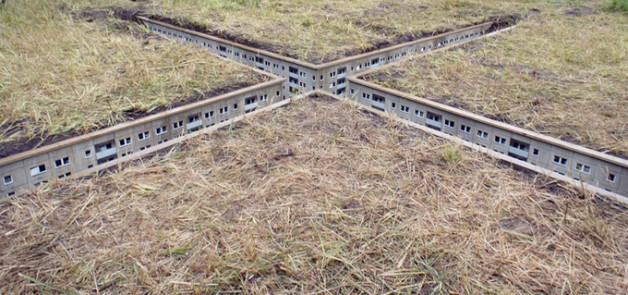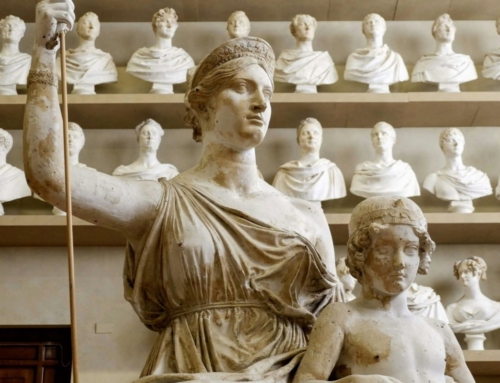Chapter 20—Salvation History Re-presented
The revelation to St. John continues with a vision of Satan being bound by an angel. The saints then reign with Christ for a thousand years, after which Satan is released for a final battle in which he and his supporters are definitively defeated. Then comes the judgment.
The question that faces the alert reader is whether this material is to be read as a continuation of the visions in the preceding chapters or as a recapitulation, where a new vision starts over and presents the same thing again in a different way. The best answer is, “It depends on how you interpret it.”
Not every interpretation is a true interpretation, but we have seen in previous posts how Jesus and other authoritative interpreters within Scripture show us how Scriptural texts can have multiple true interpretations. It might seem strange to say that the way the images ought to be divided into distinct visions depends on which interpretation one is considering. But it is just like the prophecies of the Old Testament, where the way sentences ought to be divided into distinct clauses depends on which interpretation one is considering.
Here’s an example. Remember that the Bible predates punctuation marks. Editors of various editions have long put punctuation in to help readers, but it is not part of the inspired text. So Isaiah 40:3 says, “A voice cries out in the wilderness prepare a way for the Lord”. Which way are you supposed to read it? Is the voice in the wilderness or is the way for the Lord in the wilderness? From the way we usually like to speak in English, it might seem like the former is more likely. But if you consider the original historical context of the prophecy, which is to encourage the people to return to the Holy Land from their exile in Babylon, the more fitting interpretation is: “A voice cries out: ‘In the wilderness prepare a way for the Lord.'” Between Babylon and the land of Israel is the vast Arabian desert, and it is not practical to march across it. To go between the two, one ordinarily has to journey north, then east-west, then south again. But the Lord is so determined to go back that he is going straight through the wilderness – so the people had better get moving!
But the original historical context is not the only sense of the prophecy. The Evangelists are inspired by God to say that this passage was fulfilled in St. John the Baptist. Since John was in the desert, and the way of the Lord that he is calling for is in the people’s souls, then for his situation the interpretation “A voice cries out in the desert: “Prepare a way for the Lord” makes more sense. This other division of the sentence is just as true, although it is applicable to a different situation. The editors of the NABRE are attentive to this, and so they punctuate it one way in the Old Testament and the other in the New Testament, as in Mark 1:3.
Likewise the prophetic visions of the Book of Revelation, as we have seen, can be read rightly as applying to events in St. John’s time or as applying to later events. If we are reading it according to its meaning for the Church in St. John’s time, then in Chapters 17-19 Babylon represents pagan Rome and the Beast is the antichrist Caesar Nero. But if we read it according to its eschatological sense, then Babylon represents the wicked considered all together as one “city” opposed to the city of God, and the Beast represents the Antichrist whom the Church teaches will come at the end (CCC 675). In either interpretation the reign of Christ with the saints refers to the Church, which consists of Jesus’ holy ones on earth and in heaven. As we saw in Post X, wherever Christ is, there is his kingdom; the Church is the body of Christ. The life of a member of the Body of Christ, that is, being a baptized Christian, is an intrinsically priestly and royal life (I Peter 2:5, 9), and a resurrection (Colossians 3:1). Satan’s “binding” for a thousand years means that God will never allow him to afflict the entire Church on earth so thoroughly that she is reduced to the state of the early Church under the Roman persecution.
Therefore if we are considering the Book according to the historical interpretation, then we should probably interpret Chapter 20 as a continuation of what came before, because in that interpretation it makes sense for the thousand-year reign to come after the fall of Babylon. But if we are interpreting it according to its meaning of prophesying events future to St. John’s time, then we should interpret it as a recapitulation, a new vision that presents the same thing again in a different way, as happens in many prophetic visions in Scripture. Since St. Bede’s commentary is chiefly about the latter interpretation, he interprets Chapter 20 as a recapitulation.
Although with Isaiah 40:3 we might be able to make a pretty good case for applying either reading in some sense to either the return from exile or St. John the Baptist, with Revelation 20 we get in trouble if we try to mix the two. If one interprets it according to the eschatological meaning and interprets Chapter 20 not as a recapitulation but as a continuation, then the error of “millenarianism” results (or “chiliasm,” depending on whether you prefer Latin or Greek), which supposes that at the end of the world there will be an earthly kingdom of Christ which lasts for numerically 1,000 years. The people most susceptible to this mistake are those who do not understand the Church well enough to see how the language of the thousand-year reign refers to her, and those who are not well attuned to the interpretation of prophecy in Scripture we have been reviewing in these posts.
We saw from the Old Testament prophecies that what God has done he will do again, and in a similar way. There has already been a historical fulfillment of the judgment of Babylon the great city (pagan Rome) proximate to St. John. But its fall did not mean simple annihilation. Isaiah and the Psalms prophesy that Egypt and Babylon will be converted to the Lord:
The LORD shall make himself known to Egypt, and the Egyptians shall know the LORD in that day; they shall offer sacrifices and oblations, make vows to the LORD and fulfill them. Although the LORD shall smite Egypt severely, he shall heal them… On that day Israel shall be a third party with Egypt and Assyria, a blessing in the midst of the earth, when the LORD of hosts gives this blessing: Blessed be my people Egypt, and the work of my hands Assyria, and my heritage Israel.
—Isaiah 19:21-22, 24-25Rahab and Babylon I count among those who know me.
—Ps. 87:4
Pagan Rome fell—and it was taken over by Christians and subjected to Christ. Imagine how wondrous that must have seemed to those who knew the full horror and brutality of its persecution. So shall the world be in the new creation, and more wondrous still when the Day of the Lord that is yet to be comes to pass.
Chapter 21—The New Creation
It is not incorrect to say that the Book of Revelation is about the “end of the world.” But if it is an end, it is an end that is really a beginning, like commencement speakers are fond of saying at college graduations—a beginning of something better and more lasting. Heaven and earth are renewed. We are told, among other things, that “the sea was no more.” We can speculate about the geography of the new creation, but remember that the primary purpose of the visions of the Book of Revelation is to make spiritual realities visible. In the Bible the sea represents chaos and the untamable destructiveness of nature in a fallen world that makes it inhospitable to man. That aspect of creation symbolized by the sea will be no more. The way is clear for the everlasting joy and triumph of the elect in the New Jerusalem.
Image: Street Artist, Miniature City







